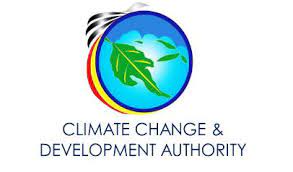Advancing Papua New Guinea’s National Adaptation Plan
Project Overview
The project aims to mainstream climate change into planning and policy frameworks and increase awareness amongst key stakeholders at national and subnational levels. The project supports the country’s Climate Change (Management) Act by strengthening existing frameworks and systems, enhancing the capacities of key stakeholders to effectively contribute to the adaptation planning process, and establishing a mechanism to sustain the process beyond the life of the project. The National Adaptation Plan (NAP) takes a phased approach to implementation, with the first phase focusing on four priority sectors: agriculture, health, transport, and infrastructure. Cross-cutting priority areas also aim to enable the effective and sustained implementation of climate change adaptation strategies and measures by addressing policy, institutional, coordination and technical barriers with a whole-of-society approach.
Project Details
Under the UNFCCC process, Papua New Guinea’s first National Adaptation Plan (NAP) provides a strategic framework to support country-driven efforts to effectively mainstream adaptation to climate-induced risks within sectoral planning processes. The NAP takes a phased approach to implementation that considers the institutional frameworks, and the first phase focuses on priority sectors: agriculture, health, transport, and infrastructure. By defining a series of strategic actions under cross-cutting and sectoral areas that seek to facilitate the operationalization of the NAP and guide the country’s efforts to achieve Papua New Guinea’s adaptation targets by 2030 through a gender-responsive and whole-of-society approach.
The "Advancing Papua New Guinea’s National Adaptation Plan" project is aimed at strengthening institutional and technical capacities for iterative development of a NAP and integration of climate change adaptation into national and subnational planning and budgeting processes in Papua New Guinea. To achieve this, the project has informed results under three outcomes: 1) Strengthened coordination mechanism for multi-sectoral adaptation planning and implementation at different levels, 2) Integration of climate change risks into key national and sectoral policies and formulation of a National Adaptation Plan, and 3) Establishment of a financing framework for climate change adaptation action for medium-to long-term. This phase of the project has focused on four priority sectors – agriculture, health, transport, and infrastructure, along with cross-cutting areas. A second phase of the project is expected to address gaps in the remaining five priority sectors, in addition to addressing gaps in regulatory frameworks and the evidence base.
Project rationale
Papua New Guinea is highly vulnerable to climate change and is among the ten countries with the highest disaster risk worldwide (World Risk Index, 2021). Papua New Guinea is experiencing increased climate variability through changes in temperature and precipitation, increased intensity of tropical storms, increased coastal erosion and saline intrusion and inundation caused by sea-level rise. Climate change has already begun to cause considerable impact in Papua New Guinea, triggering climate-related hazards, such as heatwaves, landslides, storms, and floods, alongside slow-onset impacts of increased disease and droughts. These impacts have caused substantial damage and affect the daily lives and livelihoods of the nation.
Building resilience to climate change has featured in the national dialogue and political commitments for over a decade. Recognized as an acute challenge for the country, the Government and partners have committed to mainstream climate action in their planning and delivery. Major policy initiatives such as the Vision 2050 and the National Strategy for Responsible Sustainable Development and legislation such as the Climate Change (Management) Act (CCMA) have broadened efforts to include better natural resource management, conservation and sustainable growth. Growing legal architecture has supported these efforts. Papua New Guinea’s geography, its economic base, its exposure to external shocks and limited capacity across the Government, however, make these challenges difficult to address.
Project results
The project has delivered the following results under the three Outcomes.
Outcome 1: The coordination mechanism for multi-sectoral adaptation planning and implementation at different levels is strengthened.
- Reviewed legal and policy barriers to the integration of climate change into development planning
- Developed capacities of the CCDA to steer the climate change coordination and integration process
- Strengthened mechanisms for regularly reviewing and updating adaptation priorities.
Outcome 2: Climate change risks are integrated into key national and sectoral policies and the NAP is formulated.
- Established a system for economic analysis and appraisal of priority adaptation options and integrate climate change adaptation priority interventions into the Environment Act, National Disaster Mitigation Policy and MTDP3, and sector-specific policies in Agriculture, Health, Infrastructure and Transport
- Formulated the NAP with a specific focus on Agriculture, Health, Infrastructure and Transport sectors, as well as cross-cutting areas.
Outcome 3: Financing framework for climate change adaptation action in medium-to long-term is established
- Developed a NAP financing and investment strategy, including the development of four sector-specific idea notes on priority adaptation interventions to feed into Papua New Guinea’s country programme under the GCF Readiness project.
News
Momase Region Consultation Workshop (2021)
Exposure: Advancing together in the Asia Pacific (2021)
Southern Region Consultation Workshop (2021)
National Consultation Workshop (2021)
CCDA EMTV (Television Station) Story (2021)
Southern & Highlands Region Combined Adaptation Planning Training (2022)
Momase Region Adaptation Planning Training (2022)
New Guinea Islands Region Adaptation Planning Training (2022)
Key Results and Outputs
Outcome 1: The coordination mechanism for multi-sectoral adaptation planning and implementation at different levels is strengthened.
Outcome 2: Climate change risks are integrated into key national and sectoral policies and NAP is formulated.
Outcome 3: Financing framework for climate change adaptation action for medium-to long-term is established.
